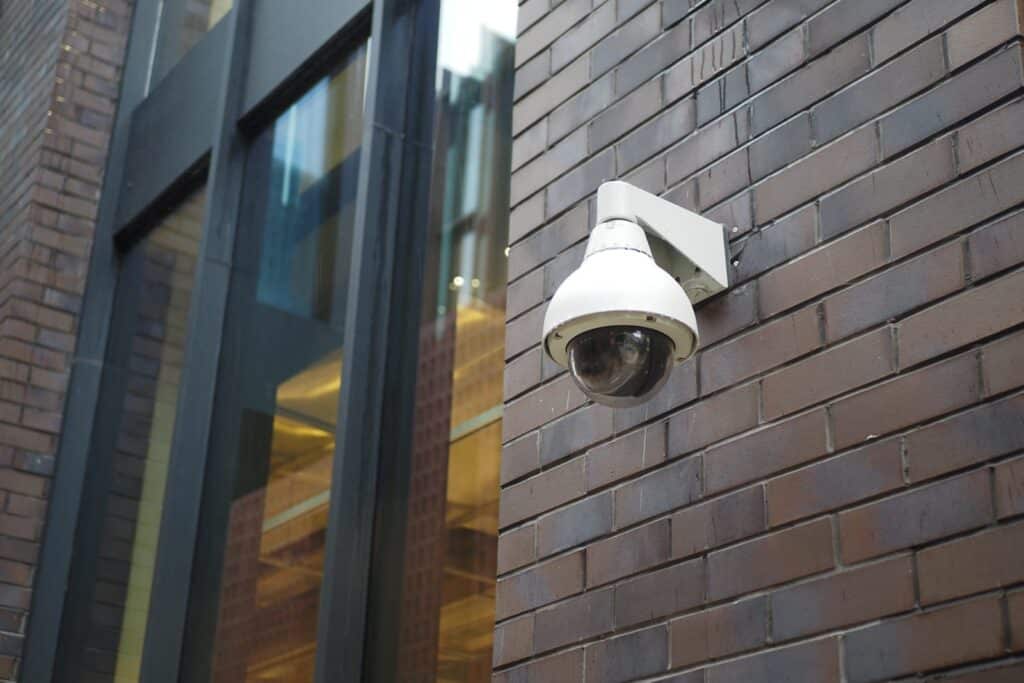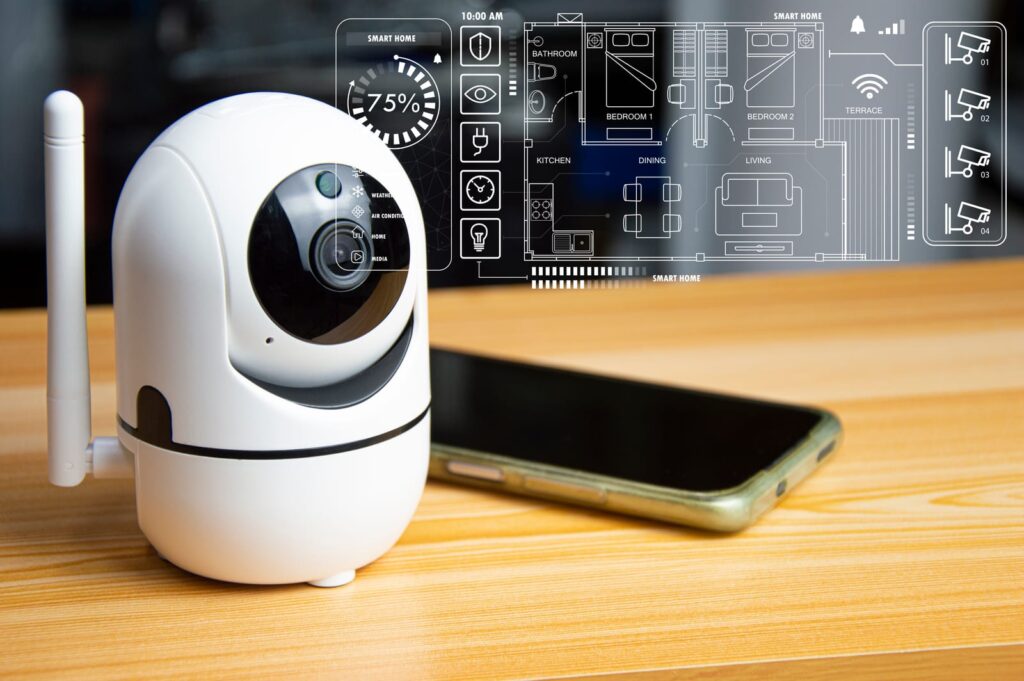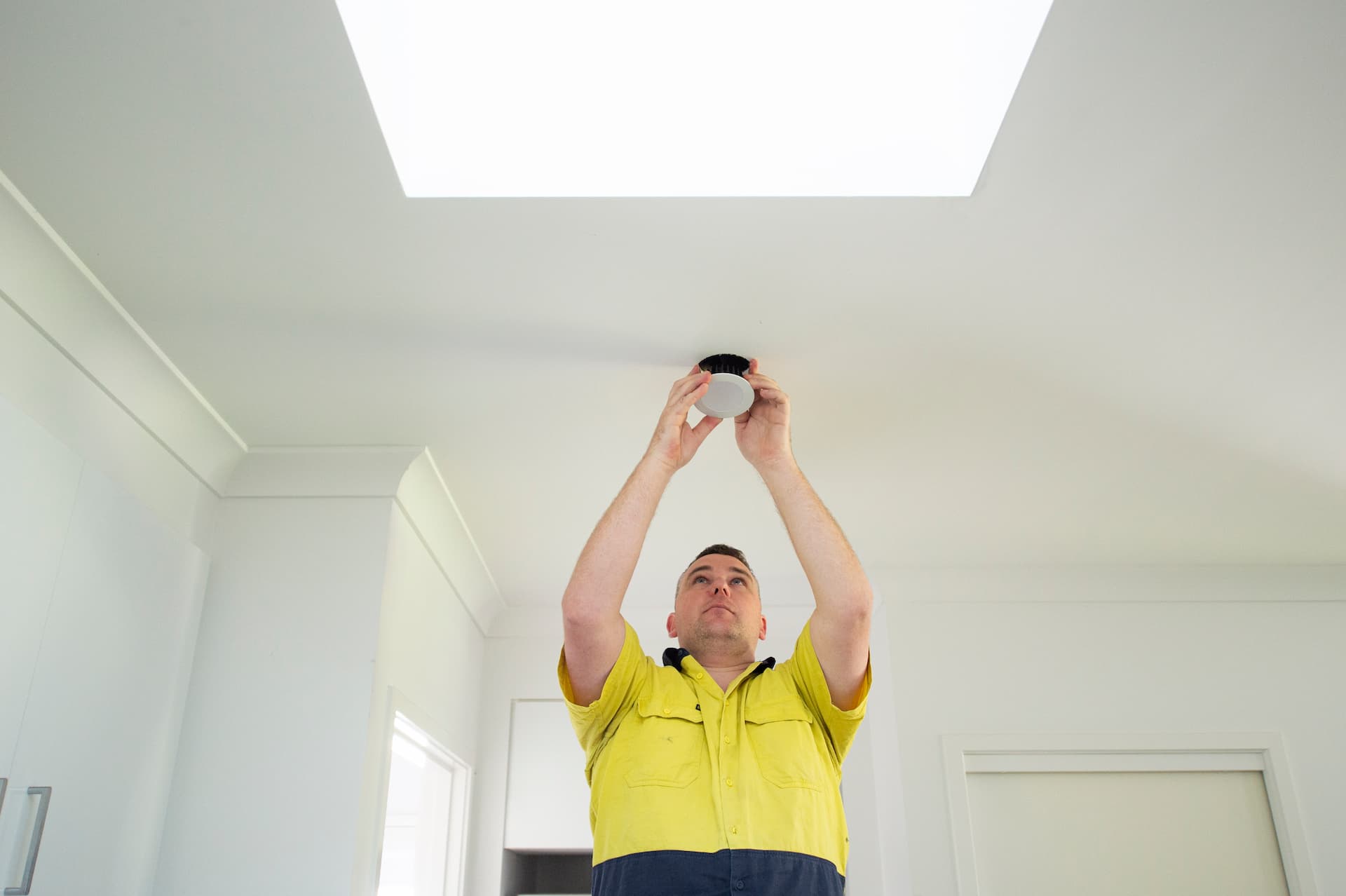There are many types of security cameras available on the market today. You can choose from a variety of different types of security cameras, each with their own set of features and benefits.
Here is a look at some of the different types of security cameras available:
Bullet Security Cameras
Bullet cameras are one type of security camera that has gained popularity in recent years. Bullet cameras are small, round cameras that can be mounted on a wall or ceiling. They are named for their shape, which resembles a bullet. Bullet cameras are typically used indoors, but there are some models that are weatherproof and can be used outdoors.
One advantage of bullet cameras is that they are less conspicuous than other types of security cameras. This can be beneficial if you do not want it to be obvious that your home or business is being monitored. Bullet cameras can also be purchased in a variety of styles, including ones that look like smoke detectors or sprinklers.
Another advantage of bullet cameras is that they typically have a wider field of view than other types of security cameras. This is due to the fact that they are small and have a wide-angle lens. This can be beneficial if you want to be able to see more of your premises.
Bullet cameras typically have a lower resolution than other types of security cameras. This can be seen as a disadvantage if you want to be able to see small details. However, there are some high-resolution models available.
Bullet cameras typically have a fixed field of view. This means that you cannot zoom in or out. This can be seen as a disadvantage if you want to be able to get a closer look at something. However, there are some models that allow you to pan and tilt the camera.
One disadvantage of bullet cameras is that they can be difficult to install. This is due to the fact that they need to be mounted on a wall or ceiling. If you are not experienced in installation, it is best to hire a professional.
Another downside of bullet cameras is that they can be susceptible to glare, so you might need to position them carefully to avoid any blind spots.
When it comes to choosing a security camera, there are a few things you should keep in mind. The type of camera you choose should be based on your specific needs. If you want a camera that is less conspicuous, then a bullet camera may be a good choice. If you need a camera with a wide field of view, then a dome camera may be a better option.

Dome Security Cameras
Dome cameras get their name from their spherical shape, which resembles a dome. They’re another popular choice for both home and business security, as they offer a wide field of view and can be installed in a variety of locations.
Dome cameras are usually considered more tamper-resistant than bullet cameras, as it’s more difficult to tell which direction they’re pointing in. This makes them a good choice for locations where you want to deter would-be criminals, as they won’t be able to tell if they’re being watched or not.
There are a few things to keep in mind when shopping for dome security cameras. First, you’ll want to consider the resolution of the camera. The higher the resolution, the better the image quality will be. You’ll also want to make sure the camera has night vision capabilities so you can still see what’s going on even when it’s dark outside. Additionally, consider the field of view that the camera has. The wider the field of view, the more area the camera will be able to cover.
When it comes to placement, dome security cameras can be placed either indoors or outdoors. If you’re placing the camera outdoors, make sure it’s in a location that’s not easily accessible so that criminals can’t simply disable or destroy the camera. It’s also important to make sure the camera is placed in an area with good lighting so that images are clear.
However, dome cameras can be more expensive than bullet cameras, and they might require professional installation.
Wedge Security Cameras
Wedge security cameras are one of the most popular types of security cameras on the market today. And for good reason—wedge cameras are small, compact, and easy to install, making them ideal for a wide range of security applications.
Wedge cameras are popular because they are less conspicuous than other types of security cameras, and they can be mounted in a variety of locations. They are also relatively inexpensive, which makes them a great option for budget-conscious shoppers. Also known as a mini dome camera, these small, unobtrusive cameras are perfect for indoor surveillance.
When it comes to choosing a wedge camera, there are a few things to keep in mind.
First, consider the resolution you need. Wedge cameras are available in a range of resolutions, from standard definition (SD) to high definition (HD). If you need to identify faces or other small details, HD is the way to go. For general surveillance, SD will suffice.
Next, think about the field of view you need. Wedge cameras typically have a field of view between 90 and 180 degrees, so you’ll need to decide how much of the area you want to be able to see. A wider field of view means you’ll be able to see more of the area, but it will also mean the image will be more compressed.
Also, think about what features you need in a wedge camera. Do you need night vision? Do you need a wireless connection? Do you need a wide-angle lens? Once you know what you need, you can start shopping around for the perfect camera.
Finally, keep in mind that price is always a factor when it comes to security cameras. But don’t let price be the only thing you consider—make sure the camera you choose is from a reputable brand and has good reviews.
Pan, Tilt and Zoom Security Cameras
Pan, Tilt and Zoom high speed dome cameras are ideally suited where manned control rooms are in place. It allows the operator to control the camera, enabling them to identify and zoom in, monitor and track a specific incident or point of interest. These cameras are ideally suited to public venues, shopping centres and specialist infrastructure sites.
PTZ security cameras are designed to give users maximum flexibility in terms of camera positioning and view. As the name suggests, PTZ cameras can pan (rotate horizontally), tilt (rotate vertically), and zoom (magnify) in and out. This gives users the ability to closely monitor activity in a specific area, or to track moving objects across a wide area.
PTZ cameras are available in both wired and wireless versions. wired PTZ cameras are typically connected to a security DVR or NVR (network video recorder), while wireless PTZ cameras transmit video and audio data wirelessly to a receiver.
Most PTZ cameras also come equipped with built-in IR (infrared) LEDs, which allow the camera to see in complete darkness. This makes PTZ cameras ideal for 24-hour surveillance applications.
PTZ cameras are available in a wide range of prices and feature sets. Some PTZ cameras are designed for indoor use, while others are weatherproof and made for outdoor use. Some PTZ cameras come with built-in storage (usually SD cards), while others require an external storage device.
When shopping for a PTZ camera, it’s important to consider your specific security and surveillance needs. Do you need a camera that can pan, tilt, and zoom? Do you need night vision? How much storage do you need? Once you’ve answered these questions, you’ll be in a better position to find the PTZ camera that’s right for you.

Panoramic 360 degree cameras
Panoramic cameras provide a full 360 degree view of the location around the camera. This can be a cost effective solution as only one camera is required in place of many cameras. These cameras are ideally suited to wide open spaces including retail and warehousing environments.
Most business and home security cameras give you a limited, fixed view of a small area. But what if you want to keep an eye on a larger space? That’s where a panoramic security camera comes in, giving you a 360-degree view of everything happening around the camera.
A panoramic security camera is a type of surveillance camera that captures a wide-angle view of the area surrounding it. Unlike traditional security cameras, which have a narrow field of view, panoramic cameras have a wide field of view that allows them to see more of the area around them.
Panoramic security cameras are ideal for use in a wide variety of settings, including:
Retail stores: You can use a panoramic camera to keep an eye on your entire store, including the sales floor, stock room, and register area.
Office buildings: A panoramic camera can help you keep an eye on common areas like hallways, lobbies, and conference rooms.
Warehouses: A 360-degree view of your warehouse can help you keep track of inventory and monitor employee activity.
Parking lots: You can use a panoramic camera to keep an eye on your entire parking lot, helping you deter crime and keep track of vehicles.
Hotels: A panoramic camera can help you keep an eye on common areas like the lobby, hallways, and pool area.
Hospitals: You can use a 360-degree camera to monitor hallways, waiting rooms, and patient rooms.
How do panoramic security cameras work?
Panoramic security cameras work by capturing a wide-angle view of the area around them. Most panoramic cameras use a fish eye lens to capture a wide field of view.
Some panoramic cameras are capable of capturing a full 360-degree view of the area around them. These cameras are often called “360-degree cameras” or “omnidirectional cameras.”
Other panoramic cameras have a slightly narrower field of view, typically between 180 and 270 degrees. These cameras are often called “panoramic cameras” or “wide-angle cameras.”
Most panoramic security cameras are mounted on a ceiling or wall. This gives the camera a clear view of the area around it and helps to deter crime.
What are the drawbacks of panoramic security cameras?
Panoramic security cameras have a few drawbacks, including:
Higher price: Panoramic cameras generally cost more than traditional security cameras.
Requires more storage: The wide field of view of a panoramic camera requires more storage than a traditional camera.
May require more bandwidth: The wide field of view of a panoramic camera may require more bandwidth than a traditional camera.
May require special mounts: Some panoramic cameras may require special mounts, such as ceiling mounts or wall mounts.
May cause dizziness: The wide field of view of a panoramic camera can cause dizziness or nausea in some people.
What are the features of panoramic security cameras?
Panoramic security cameras come with a variety of features, including:
Night vision: Night vision allows you to see what’s happening in your business or home, even in low-light or no-light conditions.
Infrared: Infrared allows you to see what’s happening in your business or home, even in complete darkness.
Digital zoom: Digital zoom allows you to zoom in on an area of interest, allowing you to get a closer view of what’s happening.
Pan and tilt: Pan and tilt allows you to remotely control the camera, allowing you to get a better view of what’s happening in your business or home.
Motion detection: Motion detection allows you to set the camera to record only when there is motion in the camera’s field of view.
Wireless: Wireless allows you to connect the camera to your network without the need for a physical connection.
Weatherproof: Weatherproof cameras are designed to withstand the elements, making them ideal for use in outdoor applications.
Vandal-resistant: Vandal-resistant cameras are designed to withstand impact, making them ideal for use in high-traffic areas.
At The End of The Day
When it comes to choosing the right security camera for your home or business takes time and research. Talk to a local security company on their views if you’re entirely sure what’s best for you.



